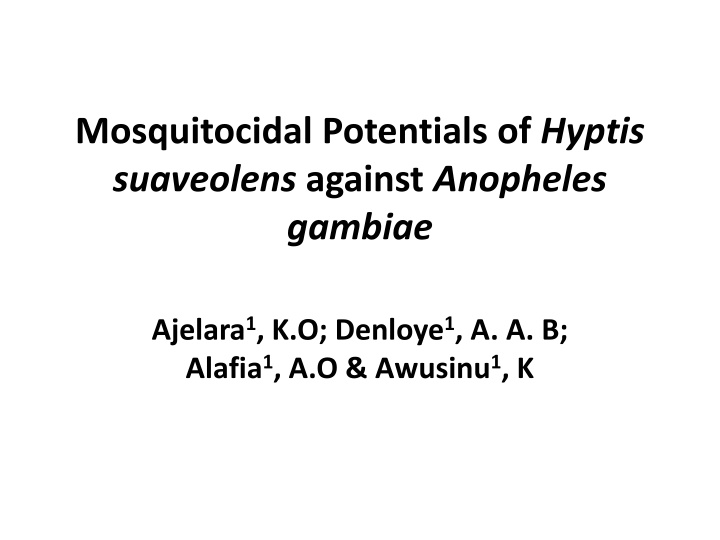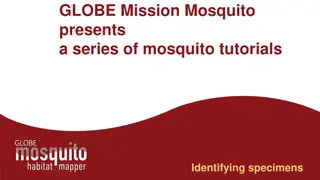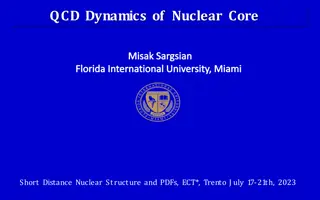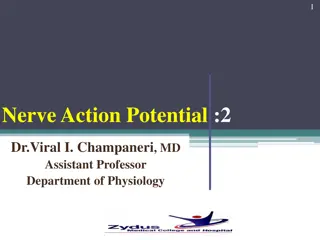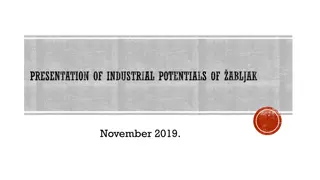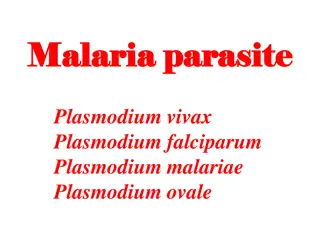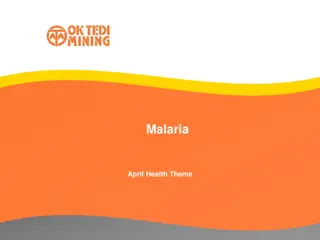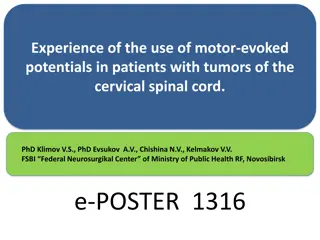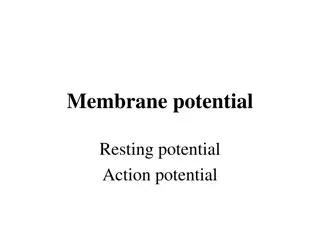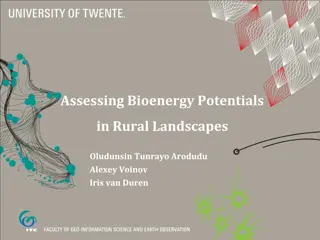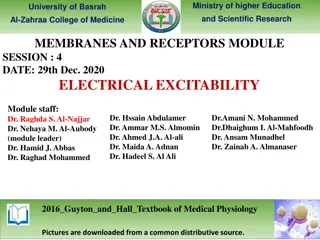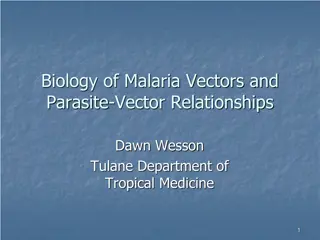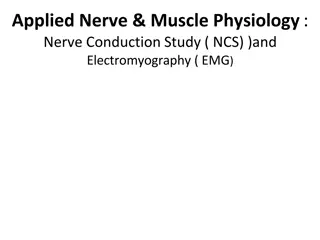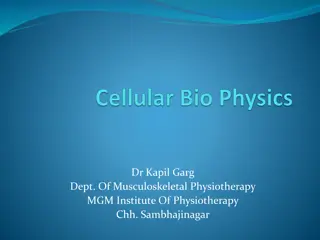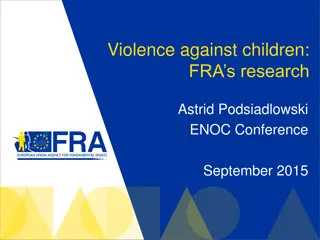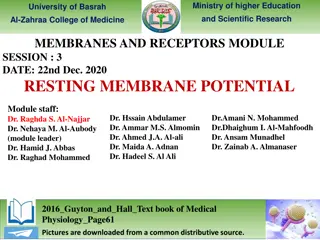Mosquitocidal Potentials of Hyptis Suaveolens Against Anopheles Gambiae
Mosquitoes, especially Anopheles, pose a significant threat as disease vectors. This study explores the insecticidal properties of Hyptis suaveolens on Anopheles gambiae, aiming to determine its effectiveness in controlling mosquito populations and transmission of diseases. The research focuses on the toxicity of essential oil and powdered extract of the plant, providing valuable insights for potential mosquito control strategies. Key findings, such as mortality rates of larvae at different concentrations, shed light on the effectiveness of Hyptis suaveolens in combating Anopheles gambiae.
Download Presentation

Please find below an Image/Link to download the presentation.
The content on the website is provided AS IS for your information and personal use only. It may not be sold, licensed, or shared on other websites without obtaining consent from the author.If you encounter any issues during the download, it is possible that the publisher has removed the file from their server.
You are allowed to download the files provided on this website for personal or commercial use, subject to the condition that they are used lawfully. All files are the property of their respective owners.
The content on the website is provided AS IS for your information and personal use only. It may not be sold, licensed, or shared on other websites without obtaining consent from the author.
E N D
Presentation Transcript
Mosquitocidal Potentials of Hyptis suaveolens against Anopheles gambiae Ajelara1, K.O; Denloye1, A. A. B; Alafia1, A.O & Awusinu1, K
Introduction Mosquito has been described as the most dangerous animal in the world. Anopheles is the World s most important malaria vector because it is highly have long life span, occurs in high population density, breeding sites are hard to target for control. It transmits malaria parasite with great detriment to man; other diseases vectored by mosquitoes includes: filariasis, dengue, yellow fever, encephalities and so on. Malaria is the world s most important and dreadful tropical disease. It causes more than 600,000 deaths annually and puts half of the world's population at risk of the disease and death. It is found in most African countries South of Sahara, adults feeds on host s blood. Larvae can be found in any water receptacles pools, puddles, hoof prints, rice fields and some water receptacles 2
Aim of the study To determine the insecticidal pontentials of Hyptis suaveolens on Anopheles gambiae Objectives I. Determine toxicity of essential oil of Hyptis suaveolens on Anopheles gambiae larvae. II. Determine knockdown effect of dried powdered leaf extract as improvised coils on adult Anopheles gambiae. III. Determine the constituents of Hyptis suaveolens essential oil using Gas chromatography - mass spectroscopy (GC-MS) analysis 3
Materials and Methods Plant materials and Test Insects Powder and extracts Essential oils Test Insects Toxicity of essential oil extract of Hyptis suaovelens on An. gambiae larvae Toxicity of powder extract on adult An. gambiae 4
Plate 1: Female Anopheles mosquito Source: www.cdc 5
Materials and Methods Plates 1 and 2 fresh and dried Hyptis suaovenlens 6
Results 7
Table 1: Toxicity effect of essential oil of Hyptis suaveolens against larvae of Anopheles gambiae Concentration 24hr 48hr 72hr 96hr Total mortality Mean % control 0 0 0 0 0 0 0 50ppm 0 0 0 0 0 0 0 100ppm 5 5 10 11 11 0.55 55 150ppm 8 13 13 14 14 0.07 70 200ppm 4 8 13 15 15 0.75 75 250ppm 9 11 14 14 14 0.70 70 300ppm 6 7 11 12 12 0.6 60 350ppm 7 10 11 12 12 0.6 60 400ppm 7 9 13 17 17 0.85 85 450ppm 4 5 11 16 16 0.80 80 500ppm 6 8 12 16 16 0.80 80 8
Table 2: Effect of essential oil of Hyptis suaveolens against larval of Anopheles gambiae. Insecticide Time of exposure (hr) 95% Confidence limits 95% Confidence limits Df Chi-square LC50PPM LC99PPM Lower Upper Lower Upper Essential oil 24hr 1448.27 565.09 157605299 2.00 1939868.00 27982.66 100000002. 00 3 3.16 Essential oil 48hr 551.47 - - 361940.47 - - 3 6.87 Essential oil 72hr 187.43 16.608 454.182 20582.38 2299.95 100000002. 00 3 1.23 9 Essential oil 96hr 142.10 57.280 213.630 2776.83 1008.997 14628.00 3 1.23
20 15 10 24hrs Mortality 48hrs 72hrs 96hrs 5 0 control 50ppm 100ppm 150ppm 200ppm 250ppm 300ppm 350ppm 400ppm 450ppm 500ppm -5 Concentration (PPM) Figure 1: Effect of Hyptis suaveolens essential oil against larvae of Anopheles gambiae. 10
Table 3: Toxicity of Coil of Hyptis suaveolens to adult Anopheles gambiae Concentration (%) Total mortality Mean mortality % mortality % protection Control 0 0 0 0 20 5 0.25 25 25 40 7 0.35 35 35 60 8 0.40 40 40 80 8 0.40 40 40 100 10 0.50 50 50 11
Table 4: Effect of insecticide stick of Hyptis suaveolen against adult Anopheles gambiae Insecticide LC50 (ppm) 95% confidence limits LC99 (ppm) 95% confidence df Chi-square Limits Lower Upper Lower Upper Coil 30minutes 250.84 _ _ _ _ _ 3 7.575 Coil 60minutes 128.57 _ _ _ _ _ 3 7.815 Coil 90minutes 20.75 0.188 35.605 373.93 133.842 53689564.00 3 7.815 Coil 120minutes 41.874 5.589 75.722 988.004 237.722 1584631513 088.00 3 7.815 12
14 12 10 8 Mortality 6 30minutes 60minutes 90minutes 4 120minutes 2 0 100 80 60 40 20 0 -2 -4 Concentration (PPM) Figure 2: Effect of insecticidal stick of Hyptis suaveolens against adult Anopheles gambiae. 13
Table 5: GCMS analysis of Hytis suaveolesis S/N COMPOUNDS PERCENTAGES Oxime-,methoxy-phenyl 1. 2.870% Alpha.-cubebene 2. 3.215% Caryophllene 3. 15.102% Santolinatrienee 4. 9.201% Bicyclo(6.1.0)nonane,9-(1-methyle 5. 0.907% Bergamotol,Z-alpha-trans- 6. 4.894% 3.beta.,17.dihydroxyestr-4-e 7. 3.344% Hydrophenantherene 8. 10.658% Phenanthrene 9. 27.094% 4 a-Methyl-8 -methylidene-decahy 10. 5.317% Diazoprogesterone 11. 2.878% Caryophyllene 12. 8.878% Heptadeca-1,9-dien-4,6-diyn 14 13. 5.643%
Discussion The result showed that the test plant is actually an effective biopesticide. The longer the exposure, the higher the toxicity. The result agrees with previous works 15
Conclusion Phytochemicals may serve as suitable alternative to synthetic insecticide in future as they are relatively safe, inexpensive and are readily available and sustainable means of vector control. 16
Recommendation Further studies be carry out in future to determine the constituent that possess mosquitocidal potentials and find a way to isolate the pure compounds and expose them to mosquitoes. Further studies on the chemical analysis of the plant oil extracts, insecticidal activities and its mode of action. Propagation with a view to preventing its extinction, if it will be considered for its insecticidal properties. 17
Acknowledgements Central Research Laboratory, University of Lagos, Akoka, Lagos Department of Disease surveillance and Notification, Environmental Services and Primary Health care, Badagry Local Government. Respondents from Badagry Areas of Lagos State. Volunteers/Students that gave blood meal to test mosquitoes 18
